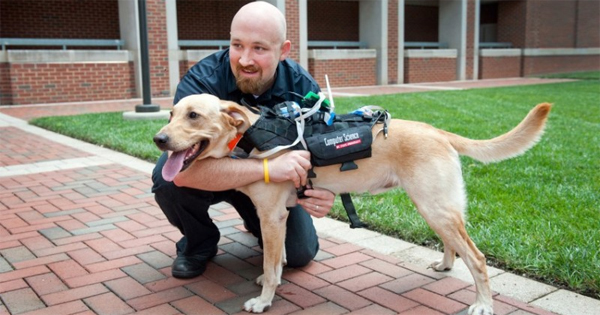Imagine being able to really know what your dog is thinking. Thanks to researchers at North Carolina State University, who developed a suite of technologies that can be used to enhance communication between dogs and humans, we may soon better understand what is on our dogs’ minds.
“We’ve developed a platform for computer-mediated communication between humans and dogs that opens the door to new…




